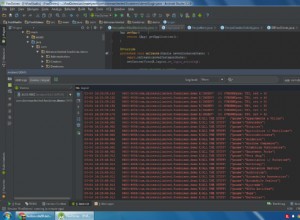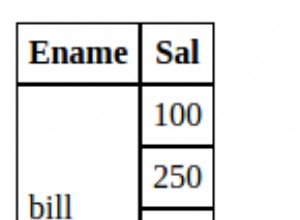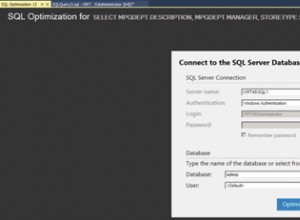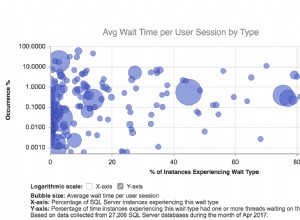Qu'est-ce qui vous fait penser que la requête examinera un grand nombre de lignes ?
La requête va scanner exactement 30 enregistrements utilisant le UNIQUE index sur tag (tag, article_id) , joignez l'article à chaque enregistrement sur PRIMARY KEY et arrêtez.
C'est exactement ce que dit votre plan.
Je viens de faire ce script de test :
CREATE TABLE `article` (
`id` int(11) NOT NULL auto_increment,
`title` varchar(60) NOT NULL,
`time_stamp` int(11) NOT NULL,
PRIMARY KEY (`id`)
) ENGINE=MyISAM DEFAULT CHARSET=utf8 AUTO_INCREMENT=1000001 ;
CREATE TABLE `tag` (
`tag` varchar(30) NOT NULL,
`article_id` int(11) NOT NULL,
UNIQUE KEY `tag` (`tag`,`article_id`)
) ENGINE=MyISAM DEFAULT CHARSET=utf8;
INSERT
INTO article
SELECT id, CONCAT('Article ', id), UNIX_TIMESTAMP('2011-08-17' - INTERVAL id SECOND)
FROM t_source;
INSERT
INTO tag
SELECT CASE fld WHEN 1 THEN CONCAT('tag', (id - 1) div 10 + 1) ELSE tag END AS tag, id
FROM (
SELECT tag,
id,
FIELD(tag, 'Other', 'Acer', 'Sony', 'HP', 'Dell') AS fld,
RAND(20110817) AS rnd
FROM (
SELECT 'Other' AS tag
UNION ALL
SELECT 'Acer' AS tag
UNION ALL
SELECT 'Sony' AS tag
UNION ALL
SELECT 'HP' AS tag
UNION ALL
SELECT 'Dell' AS tag
) t
JOIN t_source
) q
WHERE POWER(3, -fld) > rnd;
, où t_source est une table avec 1M enregistre dedans, et lancez votre requête :
SELECT *
FROM tag t
JOIN article a
ON a.id = t.article_id
WHERE t.tag = 'acer'
ORDER BY
t.article_id DESC
LIMIT 30;
C'était instantané.




